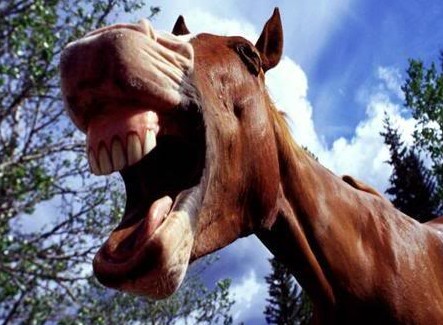A horse’s jaws and teeth are extraordinary. They begin to show when a foal is a few months old and grow constantly upward until the horse is 25 or 30 years old. They are perfectly designed to match its lifestyle as a feral pasture animal, as the action of grazing and chewing between 16 and 18 hours a day wears down the growing teeth. In addition, the grass eaten contains silica, which is naturally abrasive, so the wide variety of coarse grass and forage available in the wild keep the horse’s teeth healthy, even into old age.
Domestication of the horse has not always been to its advantage-its grazing is restricted to relatively soft grass in limited areas; the horse is kept in a stable for long periods of time, often with nothing to eat for several hours; it is fed concentrated cereals and hayage, neither of which challenge its remarkable and inbred instinct to chew. Without the abrasive silica and rough forage to grind down the enamel, the horse’s natural sideways chewing action encourages the teeth to spread out at the top. This results in uneven wear on the teeth and produces a razor-sharp edge on the outside of the tooth that can dig into the cheeks, causing painful ulcers and abscesses.

Signs of dental problems
- Horse becomes head shy or dislikes wearing bits and nosebands.
- Problems arise during riding, such as head shaking, head tilting, opening the mouth or bucking, as the horse takes action to avoid the pain it is experiencing inside its mouth.
- Quidding-dropping half-chewed food from the mouth.
- Reluctance to eat, not finishing food or eating slowly.
- Loss of weight and condition.
- Undigested food in droppings.
Preventing dental problems
To prevent dental problems, the horse should have its teeth checked by a professional vet at least every six months. Any sharpness or uneven wear is filed back (“floated”) to balance the mouth.
Telling age from the teeth
It is possible to accurately tell the age of a horse up until it is eight years old and to be able to estimate it for at least five years afterward.